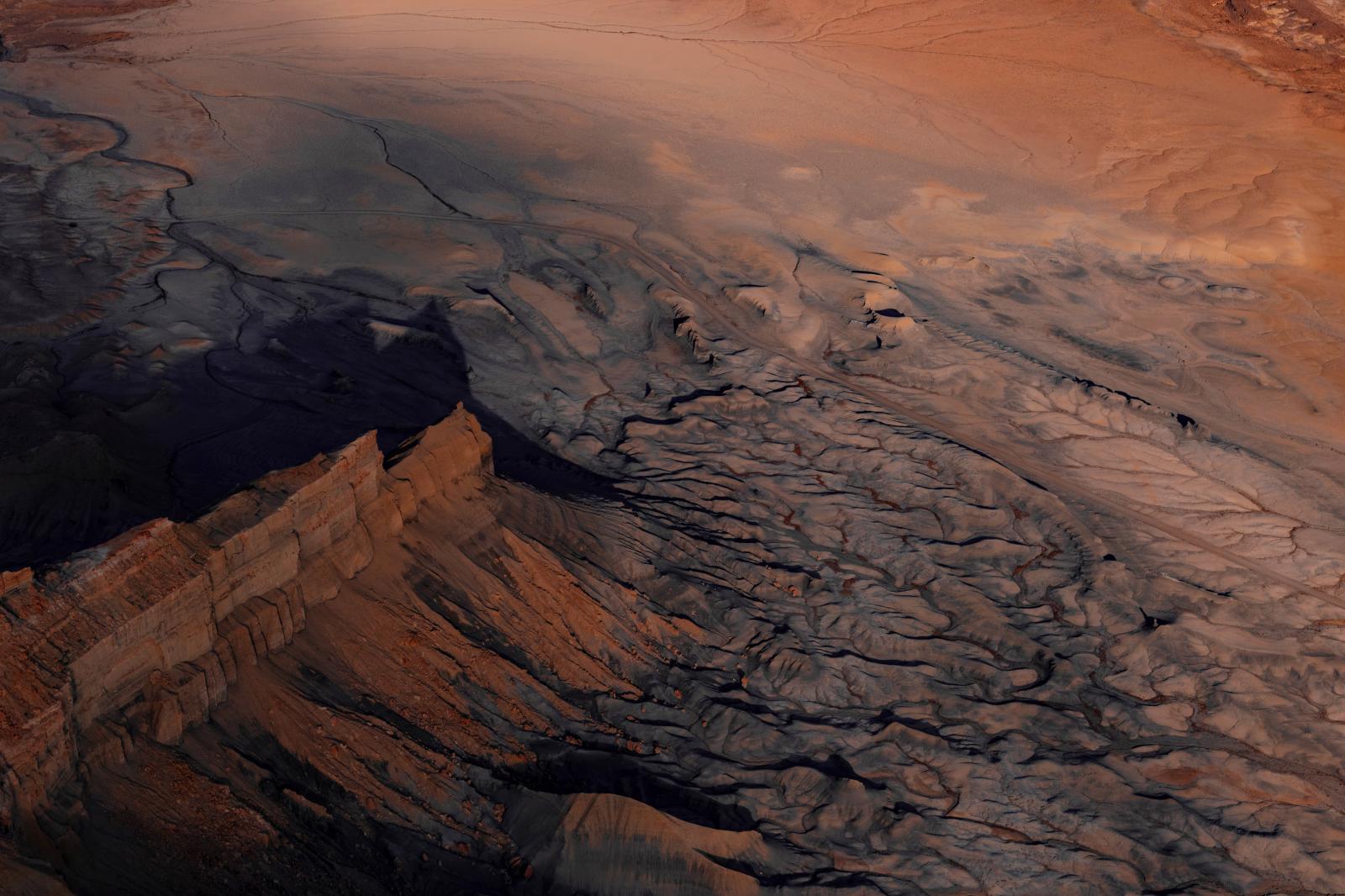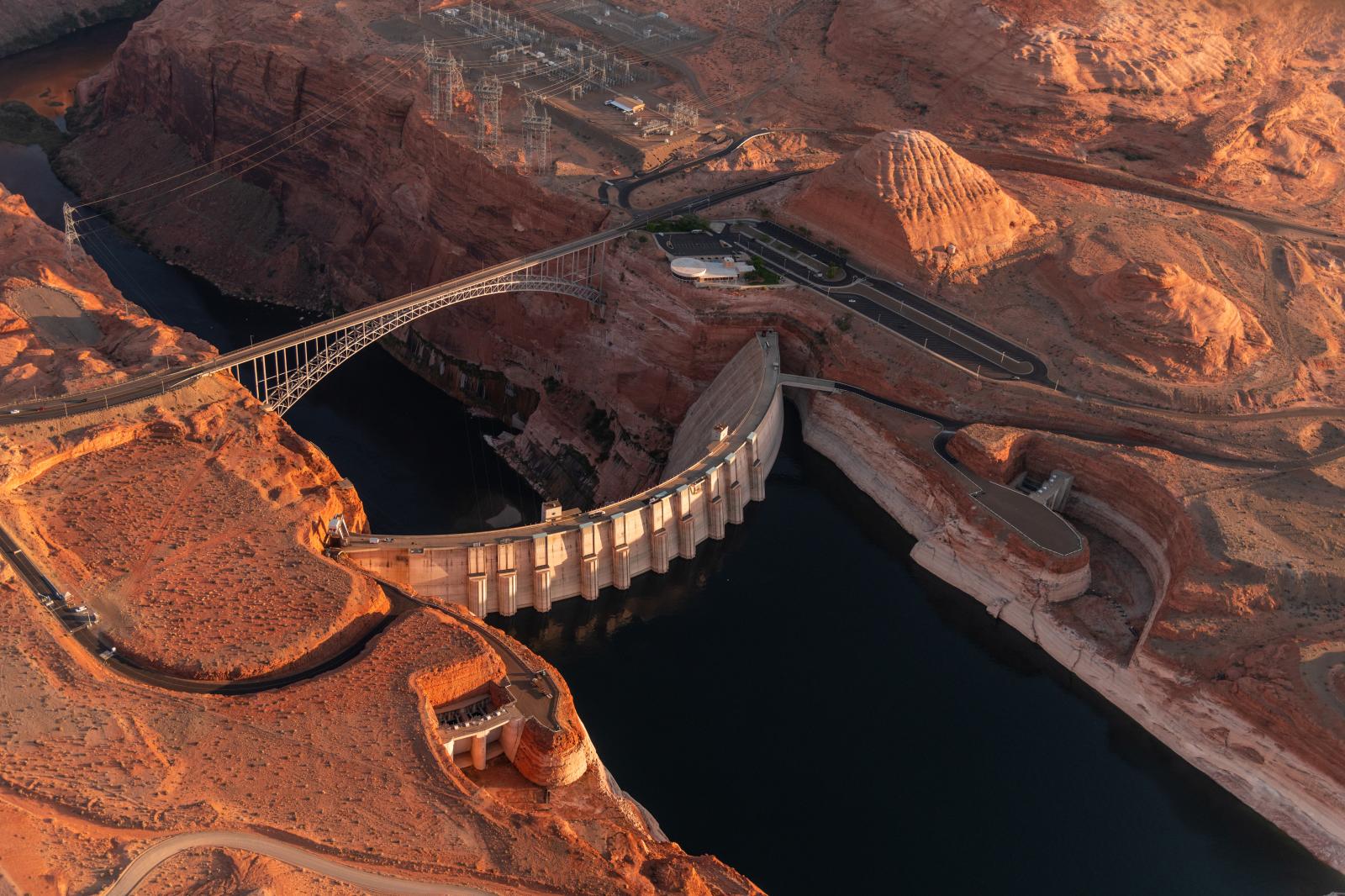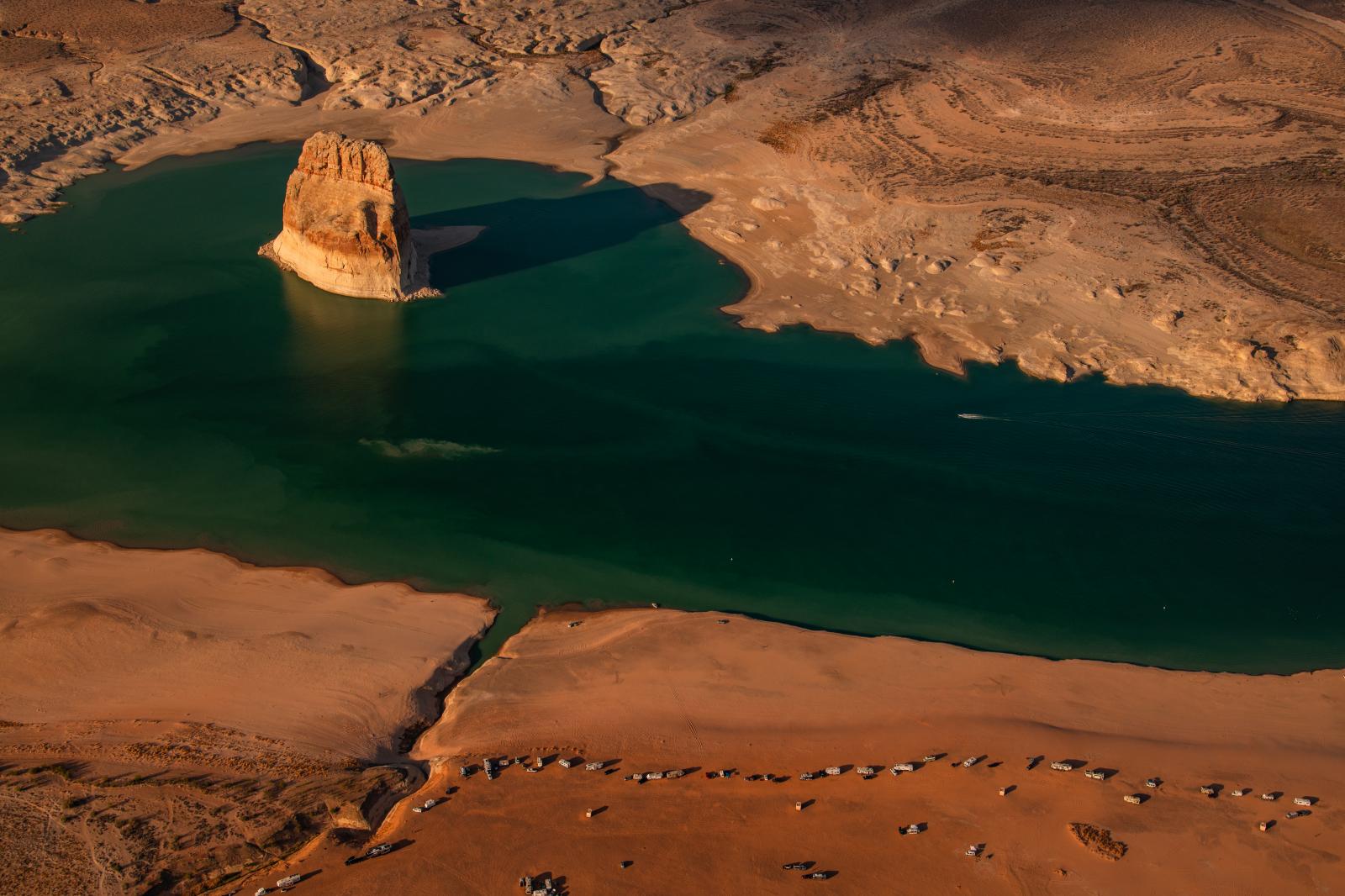Public Story
Human Intervention: Waterscapes
Summary
This series explores the natural and human-designed landscapes of Lake Powell and the Glen Canyon Dam in Arizona.
Lake Powell was created in 1963 by the U.S. government, when the construction of the Glen Canyon Dam submerged the region. Non-native fish & wildlife were introduced, erosion & sedimentary transfer patterns were altered, Native American sacred sites were submerged.
Recreational use of the lake, however, brought in hundreds of millions of tourist dollars, and the dam generated hydroelectric power, capturing water that would have otherwise have flowed downstream to California and Mexico, for residential development and Arizona agriculture. Page became a man-made oasis in the desert.
NOW
Today, the cliffs of Lake Powell show bathtub rings belying the reservoir’s lowest capacity since its creation, and critics question the wisdom of maintaining the lake at historic lows.
In August of 2021, for the first time ever, a water shortage was declared on the Colorado River.
Boat ramps were stranded above the shoreline, once-submerged Native American sites were reappearing, and water levels were hitting historic lows that threaten the function of the hydroelectric dam.
Despite the dropping water levels, a controversial plan is in the works for a pipeline to move more Colorado River water out of Lake Powell, and through underground pipes to supply growing populations in Utah’s growing community, St. George.
Environmentalists argue against the the government’s approach of continuing to draw down water from a shrinking source to supply these new developments, with no forecast of replenishment. Without a moratorium on new water diversions away from the Colorado River, they say — the water levels will continue to drop with catastrophic consequences for existing populations.
40 million people throughout the Western states depend on the Lake Powell Reservoir and the Colorado River to supply their drinking water.











